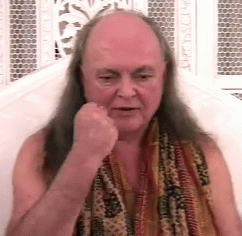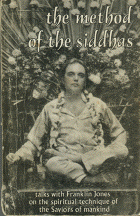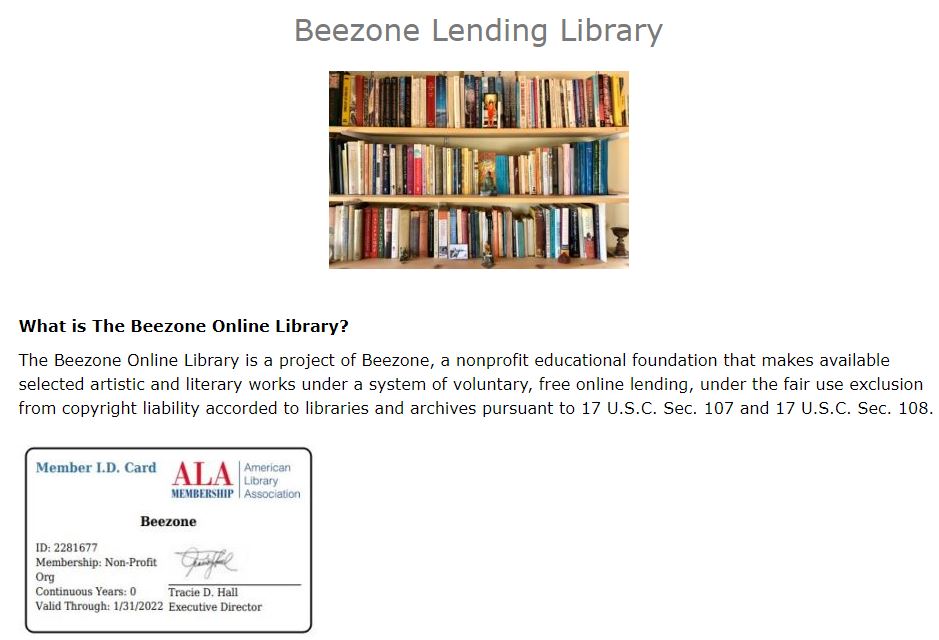Beezone Edit
Original book
CHAPTER 4
Vital Shock

DEVOTEE: I wonder if you could expand on a discussion you had with some of us the other day regarding the “vital.” You were telling us how men become obsessed with anger, fear, jealousy and the like as a result of a contraction in the vital or life function.
ADI DA: Yes. I’ve talked about how the force of consciousness operates in life through a structure or pattern of conductivity, a clockwise circle of descending and ascending force. The special point of view of “life” or vitality is an epitome or center in the midst of the body, in the general area of the navel, this lower body area. This center, or this aspect of the larger circle of force, is in the frontal and descending pattern of life. It is most intimate to us. And it is in the area of life, of vitality, that men experience most obviously, most directly, the nature of suffering. It is at the level of vitality that men cognize existence for the most part. The whole ascending life, the subtle life, is more obscure than this vital life. In fact, when men pursue spirituality, they are not responding to something “spiritual.” What makes them seek is not a spiritual motivation, not a subtle motivation. What motivates them is suffering, and essentially suffering in the vital, in the life.
The usual man lives in what I have called “vital shock.” This shock ultimately includes more than the vital. It operates even on a very subtle level. But its most obvious and motivating form is the sense of shock in the vital being. Ordinarily, the vital, at its chief center in the midst of the body, is contracted, and a man continually feels it, even physically. He may feel a kind of cramp, this tension in the midst of the body. And every man tries to relieve it continually through various experiences, pleasures.
This vital center is like the shutter in a camera. Like the shutter in a camera, it curls in on itself in order to close, or else unfurls in order to open. It is like your hand. If you clench your fist and hold it together as tightly as you can, it begins to become painful. Just so, this vital center is alive, sentient, and when it contracts, like your hand, it creates a sensation. Not only does it create a physical sensation, but also many other reflections in life and consciousness. Therefore, when this contraction occurs in the vital, we not only get a cramp in the stomach, we have a whole life of suffering.
Every aspect of vital existence is controlled by this image, this state, this vital shock. The patterns to which men become addicted are simply extensions of this contraction. For instance, here in Satsang, you may go through a period of obsessiveness, when its very difficult for you, when you are continually obsessed with various kinds of desires, feelings. At the beginning of that period, something occurred. Something in life, somewhere, suppressed or appeared to suppress the vital. And all of the patterns, the rituals, the strategies that began to come on to you were reactions to that suppression of the vital. The sensation or cognition of that suppression or “blow” is the form of vital shock that currently obsesses you. But even before you began the present episode, the vital shock was already your condition. There is a continuous vital contraction.
In fact, what people are suffering is not their peculiar life-patterns or strategies in themselves, but this original shock, in the form of a primary reaction, this contraction of which I speak.
Men seek through all kinds of means to become free of their various symptoms, their various strategies, including the cramped sensation in the midst of the body.
True spiritual life, radical life, is to deal with this fundamental, present activity, this contraction, not with the search that is an expression of it.
It is not to deal with the symptoms, not with the strategies that it manifests, but with this activity itself, presently. This primary activity, this contraction, is the root and the support and the form of all the ordinary manifestations of suffering, all of the patterns of life that men acknowledge to be their suffering.
A person can be set into a whole period of dramatizing his suffering by some simple event in his life, a frustration of some kind, a threat, a loss, whatever, a vital shock. But release is not a matter of looking into your memory and discovering the various sources or incidents of these shocks in the past.
You know, the day your father hit you, the day your dog died, and all the rest. Those are only past instances of this same process. The process itself is always instant, present, spontaneous. It is a reaction to life itself. Life is its own shock.
The awakening of consciousness into the form of life is that shock. Birth is that shock, not merely the original physical event that may be remembered, but every moments cognition of being alive. All the events within life are just extensions of that life-shock.
In The Knee of Listening I mentioned an experience I had at one point, where I remembered, even relived my prenatal state, my awakening into the body. There was a kind of gloriousness about it, a fantastic form of energy, shaped, as I described it then, “like a seahorse.” That was the original awakening of the kundalini, if you will. But in the same instant there was intense sorrow. The shock was life itself, the shock of embodiment. The “seahorse” is already contraction.
All ordinary suffering is only a cramp. It is this contraction. Wherever there is this contraction, there is obstruction to the flow of force. There is also the tendency in consciousness for there to be the sense of separate existence.
If you cramp the hand together in a fist, there is a sensation in the hand, as the hand, that is different from the space around it. When the vital itself is contracted in this way, the center of the “hand” is the ego, the “me,” the separate self sense. The mind of this “me,” like its form, is separate, separative, compulsively differentiating. So the whole drama of seeking that is a reaction to this contraction or reaction to life, always begins with this “me.” “Me” is the core of this experience. It is the center of the “fist.”
Every person seeks by every means to be relieved of his suffering, but the suffering cannot be relieved, this contraction cannot be uncoiled without the “me,” which is its center, dissolving. The whole affair, at the level of life, of vitality, involves the dissolution, not only of the physical manifestation of this contraction, not only of the life drama, but of all its qualities, all of its peculiar psychology, all of its mentality, all of its assumptions. Spiritual life involves the undermining of the whole point of view of vital shock.
The fundamental forms of this intense cramp of energy, felt as the fire of desires in the vital, are the dramas of money, food and sex. And if the cramp of obstruction is too severe, there is loss of vitality, desire and function in these same areas of life. No vitality, no survival.
One who exploits the apparent condition of desire no longer conducts the force of life. There is only the use of it, the revulsion of force, the emptying of force. He does this because the contraction is painful. He discovers that if the force itself is diminished, the pain goes away.
If you empty the vital of its force, the cramp is not felt, even though the contraction remains. So the self-indulgent person empties the vital constantly, and he feels relief, he feels open, he feels satisfied. But as soon as his strength returns, he feels the pain again, unless he has exhausted and contracted the vital to the point of impotence.
He will continue his efforts until the entire process of his search fails, and he feels its failure. At that point, Satsang becomes possible, the life of understanding becomes possible.
One who is dramatizing or living this state of vital shock is not truly alive, not enjoying life. He is always self-enclosed, always suffering, always unconscious, always obsessed, always seeking.
Everyone wants to begin spiritual life as a search. They want to carry on spiritual life as an extension of the same thing they’ve always been doing. They want to be satisfied, they want to be emptied, they want to be free of this cramp. They want to be free of it. Me. But “me” is the center, the core of this contraction.
Satsang is a paradox. Satsang is an offense to Narcissus, an offense to this contraction, not a satisfaction of it. Only a man who has become sensitive to his own failure can tolerate that offense.
Every moment there is this curvature being created. Why do you think there are thoughts all of the time? Why one thought after the next? Why doesn’t it come to an end? The light is curving compulsively. Why is there suffering all of the time? This activity is compulsive. It is not life. That’s not the “way it is.” There is compulsive activity, automatic activity, unnecessary activity. There is compulsive curvature, shaping, contraction of the radical force of existence.
More readings:
The Engine that Runs the World
See more:

